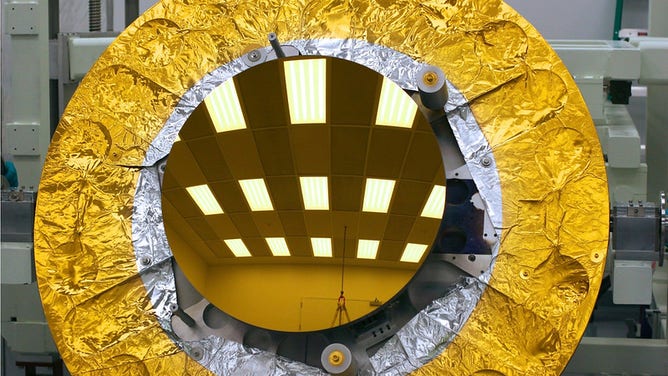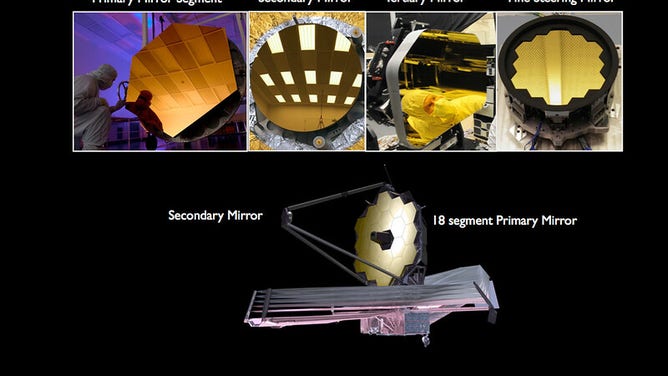Webb telescope's secondary mirror unfolds marking another milestone in space
Webb's primary mirror is an essential part of the observatory

The James Webb Space Telescope secondary mirror just after gold coating at Quantum Coating Incorporated.
(Ball Aerospace)
With each milestone in the James Webb Space Telescope's steps to unfold in space, the observatory continues closer to its final destination and soon, making discoveries about distant galaxies.
Webb reached another critical milestone in space Wednesday when its secondary mirror was extended in front of the telescope.
Webb launched on Christmas morning from Europe's Spaceport in French Guiana, beginning its one million-mile journey to the orbit of the sun known as the second Lagrange point. It has already traveled nearly 70% of the way in the 12 days since.
Due to the size of Webb with a 21-foot primary mirror and a tennis-court-sized sunshield the spacecraft was folded to fit inside the rocket nosecone. Before it can begin any observations, it must be fully deployed and tested in space.
Already, its giant sunshield was deployed, and then each layer was pulled tight, a huge step for Webb's international team on Earth.
In its under two-week life in space, Webb's deployment has so far been going smoothly, Julie Van Campen, Webb deputy commissioning manager, said Wednesday.
"Things have worked incredibly well over the past 12 days, you know, we've had moments of excitement and lots of tension as we wait to see how things work out, overall great, right on or slightly ahead of schedule," Van Campen said.
The Ariane 5 launch trajectory was so accurate Webb's team says the telescope will be able to save enough fuel to last longer than its planned ten years in space.
On Wednesday, the observatory's 2.4-foot gold-coated secondary mirror was carefully brought out in front of the telescope. The mirror is smaller than the hexagonal primary mirror made up of 18 pieces, but NASA says it plays a vital role in reflecting light to the primary mirror to where the science instruments sit.
The mirror is attached to three long arms extended in front of the telescope.

This image shows the four different types of mirrors on the Webb telescope. From left to right are: a primary mirror segment, the secondary mirror, tertiary mirror and the fine steering mirror. The bottom right shows an artist's conception of the Webb telescope optics with its 18 primary mirror segments. Credit: NASA/Ball Aerospace/Tinsley
Motors began slowly extending the arms before 10 a.m. Wednesday, and the mirror was secured in place by lunchtime.
"The world’s most sophisticated tripod has deployed," said Lee Feinberg, optical telescope element manager for Webb at Goddard.
Feinberg said multiple things needed to go right for this step to be accomplished.
"Webb’s secondary mirror had to deploy in microgravity and in extremely cold temperatures, and it ultimately had to work the first time without error. It also had to deploy, position, and lock itself into place to a tolerance of about one and a half millimeters, and then it has to stay extremely stable while the telescope points to different places in the sky – and that’s all for a secondary mirror support structure that is over 7 meters in length," Feinberg explained.
Next, the last launch locks holding Webb's radiator will be deployed. The radiator takes heat from the telescope and redirects it out into space.
The final step will involve bringing Webb's "ears" or wings from the stowed position. The wings will complete the primary mirror's hexagon shape that the observatory is known for.
The telescope will be whole in space about 29 days after launch.